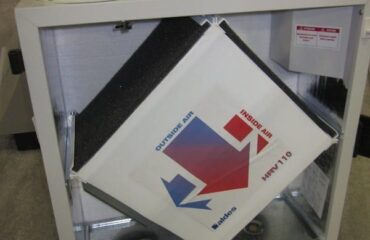What are Sustainable Construction Documents?

What are Sustainable Construction Documents?
Everything you’ve always wanted to know about Sustainable Construction Documents, but were afraid to ask.
An Architects Explains Sustainable Construction Documents
From time to time I find myself explaining the process and make up of sustainable construction documents to various people. So it recently occurred to me that it would be good to turn this into a blog for everyone’s benefit. This way, I can just point folks to this article and they in turn can always come back to refresh their memories.
So what are “sustainable construction documents” and why are the needed? Construction documents (CDs) are how the architect and engineering team convey their ideas and necessary building information to the construction team. They are an instrument of communication and are a combination of words and graphics. While legal contracts, procedural and administrative information for a project are also part of the “Construction Documents (CDs)”, in this blog I will focus mainly on drawings and specifications. These two parts of the CDs are where the building itself is described in a high level of detail.
Drawings (a.k.a. Blueprints) are the graphic part of the CDs and are divided in to the following ‘main’ categories:
Sustainable Architectural – Developed by the architect and conveys information about building shape, size, dimensions, materials used at every location inside and outside the building, the layout of each floor and roof and location of the building on property.
Sustainable Civil Engineering– Developed by the civil engineer and deals with the property (i.e. land around the building). These show the location of and means of connecting to storm drain, sewer, water, and electricity. If the property is sloped (or needs to be sloped), this information is conveyed in these drawings as well.
Sustainable Landscape Architecture – These drawings are developed by the landscaping architect and contain information on plants to be used at various locations around the property. An irrigation professional develops and provides irrigation drawings as part of the landscape drawings.
Sustainable Structural Engineering– These are developed by the structural engineer and contain information on how the building is supported and anchored in place, and how it holds itself up against forces of nature and the weight of people and things.
Sustainable Mechanical Engineering– These drawings contain information about how the building will be heated, cooled and supplied with adequate fresh air for its many inhabitants. These drawings are prepared by the mechanical engineer.
Sustainable Electrical Engineering– These drawings are from the electrical engineer and tell the builder how the building and numerous equipment inside it, will be powered. They also contain information about lighting for the building.
Sustainable Plumbing – These drawings are by the plumbing engineer and contain information about the water supply and waste piping in the building. The design and construction of these pipes ensures that every faucet has water and toilets have their waste carried safely away.
Specifications have no graphics, they are 100% word documents in the form of a book and are divided into “Divisions”
Divisions 0 & 1: are the “front end” of the specs and contain the index, instructions to the contractor for bidding, contractual information such as warranties, regulations, etc. This is mainly information that is being conveyed to the builder on the owner’s behalf.
Divisions 3 – 10: are technical divisions with information about each product to be used to put the building together and how it should be installed.
Divisions 11 – 17: deal with all the equipment, wiring, cabling inside the building, furnishings, elevators, heating and cooling equipment.
Each specification division is sub divided into “sections”. For example, section 09900 on Painting in Division 9 of the specifications book. And finally, each specification section is set up in 3 parts – General, Products and Execution. The General sub-section tells the contractor which other specification sections are related to this section. Products sub-section tells the contractor which specific product the architectural and engineering team has used as the basis for their designs and which other substitutions they will accept. Execution sub-section talks about how the product has to be installed and what constitutes as good workmanship.
The above classification is what you will see in non-residential projects. Residential projects rarely have specifications as the home owners tend to select most of the products themselves, but some project teams do create detailed residential specifications to help ensure owner goals for sustainability are clearly spelled out in any sustainable construction documents produced.




